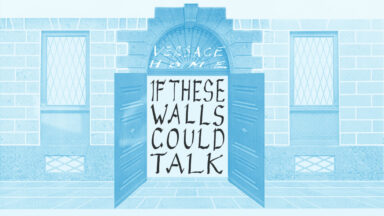Text by Luigi Locatelli
When a designer, or a fashion photographer, begins to act as movie director it’s usually a disappointment, if not a resounding failure. One can be sure in advance that the result will be a spit-and-polish product, in which everything is aestheticized (and anesthetized) in compliance with the idea of beauty that dominates in fashion, a formal and outer icy perfection able to communicate at most an artificial seduction or so-called glamour. Fashion fixes and freezes, the cinema – already in its native version of motion pictures – on the other side, frees and loosens. Worlds and incompatible languages (and that’s maybe the reason why films on the world of fashion are often hideous). For this is a real miracle that Tom Ford, of whom we know what he did as a fashion designer at Gucci and Yves Saint Laurent (reinvention and re-establishment of a brand, even commercially), in the two films he has shot so far – first A Single Man, now this Nocturnal Animals – has not applied the aesthetic of the show, but has in fact moved away making real cinema.

Tom Ford is an author, how big it is yet to be determined, but certainly not satisfied to imprison in gorgeous dresses his actors, immerse them in impeccable interiors, and photographing everything with a lustrous patina. Nocturnal Animals is interesting for many reasons. Especially for how Tom Ford lucidly, knowingly, willfully deconstructs ossified glamour and beauty, integrating brutality and the strength of the dirty, the lurid, the imperfect, the flawed in his film. In other words, ugliness. The opening sequence is the key to tell and let us know: obese women, sagging beyond any imaginable physical decay, who perform naked with only some garment or accessory as cheer leader, winking filthy. We’ll find out soon that this is an artistic performance in a New York art gallery run by a lady named Susan (Amy Adams), very determined and powerful in the branch. Tom Ford seems to want to erase his image as an inventor of fashion trends and fashion mythologies. Or perhaps he wants to tell us that Beauty and Ugliness are intimately connected, and that the first may arise from the second, and that this could not exist without the second, as well as Beauty is always at risk to deteriorate and turn over in Ugliness. Possible policy in an art context, but not in fashion, that, worth its own extinction or delegitimization, can not afford to show its dark side, but only the one well-lighted, just the one under the Apollo sign. Just that we are all nocturnal animals, or at least there is always in us something of the nocturnal animal.

The same film is structured on two opposite narrative levels, the first is the well-being and the apparent harmony, the second is the wild side. Levels on which Tom Ford applies two different stylistic registers. Polished without fashionable finishings in the first case, dirt and brutalist in the second. Two opposed and specular fields, but who secretly communicate and hybridize. Susan is at the center of the first domain with her art gallery, and you can imagine the beautiful, fatuous and bitchy people crowding at her openings. She is with a man who does not love her anymore, if he ever loved her, but who runs also her company. One day a package is delivered to Susan. It contains the novel just written and not yet printed by her former husband Edward. Title, Nocturnal Animals. We understand, and partly see in flashbacks, how the story between the two of them had started early at university and lasted a couple of years. Until Susan, convinced that Edward was too weak, irresolute and with too modest ambitions to break through as a writer, had left him. That book is the first link between them after ninenteen years.Reading it, Susan is sucked into the story, as we see it translated into images. A group of debauched blocks at night a car on a Texas road, takes as hostage Tony Hastings, the driver, kidnaps his wife and daughter. They will be found death after being raped and tortured. Justice does little, almost nothing. And then one sheriff, who, being very ill, no longer has anything to lose, decides to help Tony to take justice into its own.

The reading dismantels several certainties in Susan, redraws in her eyes the figure of her former husband, and makes her understand that her glossy successful life is in reality precarious. The movie is this, the emergence of the unconscious – the fear, the desire, the darkness – through the reading of a book. Because Susan visualizes the protagonist of that brutal Texan story with the face of her former husband Edward. It’s a movie full of subtleties, filmed impeccably, haunting and disturbing at the right point. Tom Ford achieves an excellent result, going well beyond the previous one, and very good, A Single Man. But something is missing to make Nocturnal Animals become memorable. Although having broken many barriers and conventions, Tom Ford remains after all trapped in a still too classic film-form. Not a masterpiece, but a very dignified and interesting work. Those who expected from Tom Ford, after A Single Man, another ‘LGBT-themed’ film, will be disappointed. Here there is the undercurrent theme of a man considered too frail, too weak, a loser, an unfinished male (the character Edward), but then who takes its revenge and payback (as well as the everyman of his novel is transformed into an avenging beast, better, in a Peckinpah Straw Dog). Kudos to Michael Shannon, beautifully melancholic as a sheriff with the death on him.


